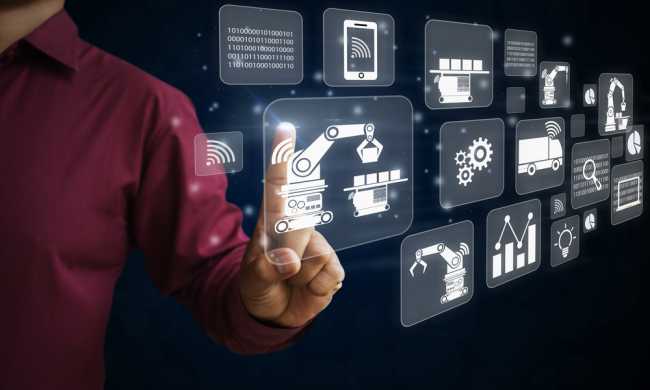Demystifying IIoT Implementation
Many industrial businesses today see IIoT as a solution to the 21st century business issues they face.
- There’s ever-increasing pressure from shareholders for better financial results, to generate greater returns on the considerable amount of capital invested in production facilities.
- New generations of workers, customers and investors are emerging. They have different expectations (e.g. flexibility, sustainability) which affect how they interact with and even decide to invest in businesses.
Manufacturing efficiency has been a business goal for a while, but how can businesses operate at high levels of both profitability and sustainability? How can they make sure every kWH of energy, tonne of raw material or hour of labor is optimally used from both a financial and environmental perspective? How can they get technology working for people to empower workers with insights when and where they’re needed most to make their businesses run more profitably and sustainably?
In achieving profitable, sustainable manufacturing – IIoT can help:
- Ensure that each plant asset (e.g. machine) runs efficiently with minimum deadtime, downtime and energy/ raw material waste.
- Get technology working for people. Provide insights rather than bombard workers with data. Make sure the right people have the right business insights in the right place at the right time to optimally do their job. Help staff know what to do to drive efficient asset operation and reduce unplanned downtime. Ensure every working hour of plant operation really counts.
- Measure, control and understand both the amount and carbon profile of energy used in the plant at the process and asset level. Make sure every kWH used really counts and contributes directly and efficiently to the business’s bottom line and is used in a way which helps reduce the business’s overall carbon footprint.
An effective IIoT implementation must have the potential to meet these and other demands. It must effectively transform industry to enable:
- Digital Assets
- Digital Operations
- Digital Workforce
To meet the expectations of today’s 21st century industrial business stakeholders.
Things to think about when beginning your IIoT transformation:
- Clearly define desired future Business state. Identify what ‘problem’ you’re trying to solve. Quantify and measure benefits and use them to identify and manage ROI. Begin with the end in mind.
- Understand how the transformation will affect your present operations. Is your digital transformation strategy scalable to minimize disruption to your day to day business? Does it support the necessary IT/OT convergence to securely and transparently link your business and operational systems? It’s important to have a strategy to turn the large amount of data into clear guidance for plant staff.
- Consider the ‘people’ aspect. Is your human capital ready to make the most of IIoT? Do you have the right collaboration culture and skills in place? Have you developed a plan to manage any changes (e.g. training, org changes, staff profiles)?
- Do you have access to the right expertise to help you succeed in your digital transformation journey? Finding the right partner will help you get the most benefit from your IIoT implementation with minimum disruption to day to day operations. ‘Exchange’ online platform allows customers and partners to collaborate and exchange information and expertise to help reduce the risk of your IIoT journey.
Our experience implementing Industrial IoT solutions in our own Smart Factories
- We’ve deployed our IIoT solutions in 80+ plants around the world, harnessing IIoT to result in improvements in manufacturing efficiency and sustainability. Two of our Smart Factories have been recognized as Advanced Manufacturing Lighthouses by the World Economic Forum, and our Smart Factory in Batam was recognized by the Indonesian Ministry of Industry.
- We’ve leveraged EcoStruxure, our own IIoT Platform, which provides industry leading, secure, transparent access to data both across the IT and OT layers and across multiple domains (e.g. Power and Process control systems).
- Solutions we call ‘EcoStruxure Advisors’ are then able to distill actionable, real-time business insights from a comprehensive, secure IIoT dataset.
- Below are examples of how our Smart Factories initiative has helped us, and could also bring benefits to other Industrial businesses:
- Analysis and optimization of process flow, availability performance and quality
- Deployment of Discrete Lean Manufacturing partnering with AVEVA
- Clear insights from industrial big data to decide what to prioritize to improve first to make the greatest difference
- Insights to drive the best use of plant resources available securely and transparently anywhere. AR techniques allow plant staff access by simply pointing mobile devices at production assets.
- Reduction in time wasted hunting for information – what the process needs to fix or optimize it is clearly spelled out. The result is improved operational efficiency and reduced downtime
- Clear worker direction which often avoids the need to open panel doors or enter machinery. This results in improved worker safety.
Find out more during IIoT World Days event (June 30-July 1, 2020) as Sophie BORGNE is one of our speakers. Check the agenda here and get your free pass.
More resources on IIoT on our website here.
This article was written by Sophie Borgne, SVP Digital Plant Business at Schneider Electric. Sophie joined Schneider Electric in 2001 and started her international career working in Africa, China, France and Italy. She has held various roles in business development, engineering, technical support management and product management. Sophie acted as the EcoStruxure Program Director and contributed greatly to the foundations of Schneider Electric’s EcoStruxure approach.


